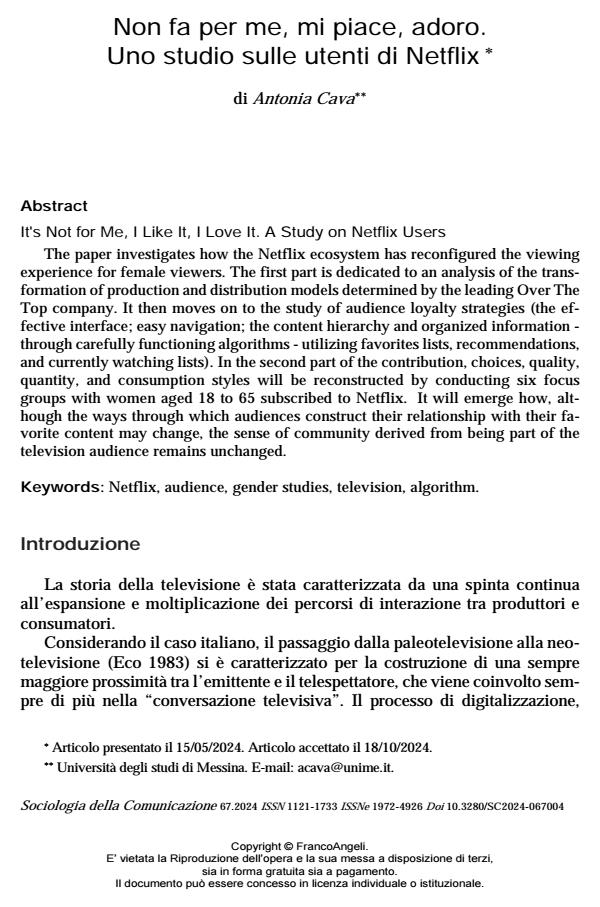Non fa per me, mi piace, adoro. Uno studio sulle utenti di Netflix
Titolo Rivista SOCIOLOGIA DELLA COMUNICAZIONE
Autori/Curatori Antonia Cava
Anno di pubblicazione 2025 Fascicolo 2024/67
Lingua Italiano Numero pagine 13 P. 65-77 Dimensione file 93 KB
DOI 10.3280/SC2024-067004
Il DOI è il codice a barre della proprietà intellettuale: per saperne di più
clicca qui
Qui sotto puoi vedere in anteprima la prima pagina di questo articolo.
Se questo articolo ti interessa, lo puoi acquistare (e scaricare in formato pdf) seguendo le facili indicazioni per acquistare il download credit. Acquista Download Credits per scaricare questo Articolo in formato PDF

FrancoAngeli è membro della Publishers International Linking Association, Inc (PILA)associazione indipendente e non profit per facilitare (attraverso i servizi tecnologici implementati da CrossRef.org) l’accesso degli studiosi ai contenuti digitali nelle pubblicazioni professionali e scientifiche
The paper investigates how the Netflix ecosystem has reconfigured the viewing experience for female viewers. The first part is dedicated to an analysis of the transformation of production and distribution models determined by the leading Over The Top company. It then moves on to the study of audience loyalty strategies (the effective interface; easy navigation; the content hierarchy and organized information through carefully functioning algorithms utilizing favorites lists, recommendations, and currently watching lists). In the second part of the contribution, choices, quality, quantity, and consumption styles will be reconstructed by conducting six focus groups with women aged 18 to 65 subscribed to Netflix. It will emerge how, although the ways through which audiences construct their relationship with their favorite content may change, the sense of community derived from being part of the television audience remains unchanged.
Parole chiave:Netflix, audience, gender studies, television, algorithm.
Antonia Cava, Non fa per me, mi piace, adoro. Uno studio sulle utenti di Netflix in "SOCIOLOGIA DELLA COMUNICAZIONE " 67/2024, pp 65-77, DOI: 10.3280/SC2024-067004